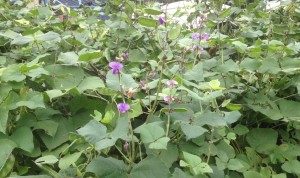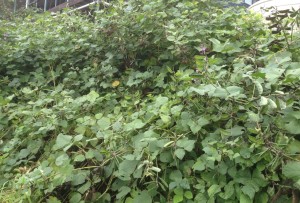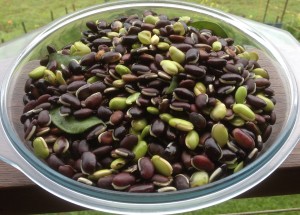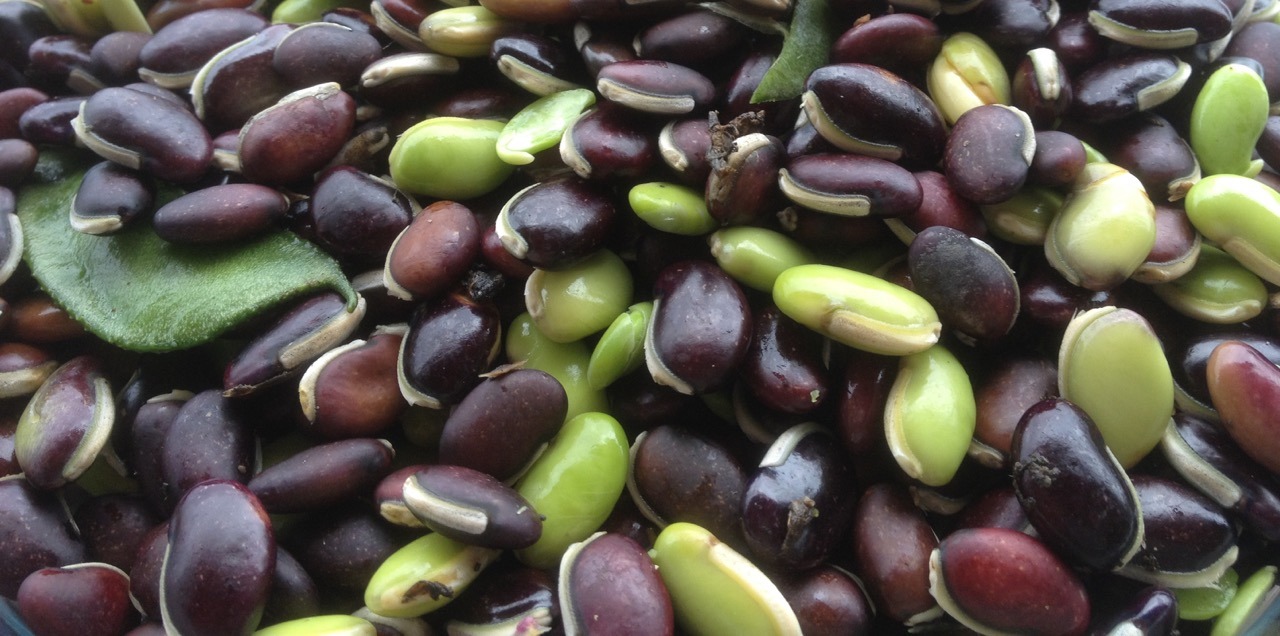
Lablab, dolichos, hyacinth bean, this bean has a multitude of names, which indicate how widely grown it is.
Lablab beans grow on a sprawling vine and will be handy here for covering slopes productively. The foliage is good fodder, and apparently will come again if you slash it back to use as a green manure. It gets the name hyacinth bean from the pink flower spikes, which are edible and good in a salad.

Growing lablab beans
This is a new crop for me, which seemed like a good prospect from reading the seed catalogue so I bought a packet to try. I got these in at the right time, in Spring as the warm weather built, although the bed preparation was a bit sketchy. It turned out not to matter, and they were soon overgrowing the row of bush beans I planted next to them, then off and over the fence, and down the bank over the grass.
Early in the season I tried eating the young bean pods, but to my taste they have too strong a beany flavour, so I pretty much forgot about them.

Now we are through to Winter and they are still going strong. As you can see in the picture above they have done very well. They have been producing seed since January, so there’s a lot there. Fortunately the pods become papery and hold onto the seeds so they are not lost onto the ground and there is no urgency to harvest them as soon as they ripen.
Using lablab beans
There is plenty of online literature about human consumption of lablab beans, particularly the flowers and green beans, but as I mentioned at the start, I found the flavour too beany to bother with, especially as there are plenty of other green beans to eat through summer.
<I have an update post here on using lablab beans to bring hens back into lay.>
But recently I figured that it’s about time to make some use of them, and have started picking the pods for trial chicken feed. A quick pick and podding yielded the plateful on the left here. Boiled up, there was enough for two feeds for the chickens, which seemed to appreciate them (they have plenty of green forage). Lablab beans can be poisonous raw, so I gave these a good boil on the wood stove in plenty of water.
The chickens seemed to do well on them, so today I picked a bag full of dry pods to boil up next time we have the stove on. Reckoning from the tiny corner of the patch of lablab beans I picked, there will be tens of kilos to harvest.
Bottom line? Lablab beans are a tough perennial crop in the subtropics, very useful for making a patch of grass productive and suppressing weeds. They will be a ‘background crop’ here in future seasons, especially for opening up new areas of paddock.

